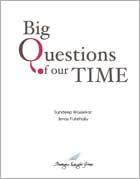The Future According to Census 2011
 |
April, 2011
By Anumita Raj
|
The new Census of India of 2011 will take several more months to be released in full. In the interim, bits and pieces have trickled out. India's population is now officially 1.21 billion. Overall effective literacy increased by 9.2% from 64.8% in 2001 to 74% in 2011. Women's literacy has increased more sharply than men's literacy. The ratio of adult women to men has increased, whereas the under-6 girls to boys ratio has declined. What does it say about how India has progressed in the last ten years? And what does all this really mean for the future of the country?
The best news for India is the decline in the country's population growth rate. While the growth rate was 21.5% in 2001, in 2011 it stands at 17.6%, down by almost 4%. This is also the sharpest decline over a ten year period since independence. As the middle class grows, the number of children had by the average Indian couple has also begun to decline. With the middle class expected to grow greatly in the next ten years, the growth rate will likely decline even further by 2021. The decline can also be attributed in no small measure to the success of family welfare programmes that have for decades stressed the importance of birth control and family planning.
The increase in overall effective literacy is also a positive sign, though not as great a feat as it is being touted to be. When the overall increase of 9.2% is further broken down, the literacy rate amongst women has increased far more than among men, even though literacy among women is still quite a bit lower than among men. From 2001 to 2011 literacy among men increased from 75.26% to 82.14%, a rise of 6.9%. In the same time frame, the literacy among women increased from 53.67% to 65.46%, an increase of 11.8%. However, in 2011, women are still significantly less likely to be literate than men.
When that Census information is fully broken down and analyzed, it will likely reveal that the percentage of rural women that are literate will be much lower than the percentage of urban women, rural men or urban men. This gender and urban-rural based disparity will hold women in India, especially rural women back over the next decade. On the positive side, several government programmes, especially those run by state governments have understood this disparity and have introduced schemes such as the Mukhyamantri Balika Poshak Yojana and the Mukhyamantri Balika Cycle Yojana in Bihar, one of the least literate states in the country. Programmes and Schemes that offer incentives such as food, cycles, clothes, books and computers to young girls to attend school and excel in their exams have shown promise. The overall aim will be to close the gender-based literacy gap over the next decade using programmes such as these.
Now, for the bad news. A basic overview of the Census 2011 reveals that the adult women to adult men ratio has improved over the last ten years. In 2001, there were 933 adult women for every 1000 adult men. In 2011, there are 940 adult women for every 1000 adult men. While this is seemingly good news, the truly alarming information comes when the male-female ratio is considered for children aged 0-6. In 2001, there were 927 girl children for every 1000 boys. By 2011, that number has actually declined. There are now 914 girls for every 1000 boy aged between 0 and 6. This is actually the lowest ratio since 1947.
The fact that there is a decline at all is a matter of deep concern, but the fact that the decline is so sharp should worry policymakers considerably. The real effect of this decline will be seen in roughly 12-15 years time, when this age group of young girls and boys will reach adulthood. Therefore, by 2025, the male-female ratio for young adults will be severely skewed. What's more, this information tells us that India as a country has regressed in terms of guarding the rights of girl children and promoting their welfare in the last ten years, even as the country has reached new economic heights.
All the information is not in yet, as has been mentioned before. When it is, it is likely that different states in India will be shown to be in different stages of development, when measured through indicators such as literacy, gender disparity and health. The challenge before India is to correct these imbalances over the next ten years in order for the country's growth to be equitable. That, however, is easier said than done. With India's population now touching 1.21 billion, it has become harder still to reconcile the global ambitions of the country, and the blatant wealth displayed by many of its citizens with the situation on the ground. Forecasts predict that India's population will actually surpass China's by 2030. In the meanwhile, the hope is that by 2030, India will be able to bring prosperity to all its citizen, not just a small percentage.
Related Publications
-
.jpg&maxw=50)
Big Questions of Our time: The World Speaks, 2016
Download:Big Questions of Our time: The World Speaks _Full Report
-

-

Second Freedom South Asian Challenge 2005-2025, 2005
read more
Download:Second Freedom South Asian Challenge 2005-2025 Full Report
Related latest News
Related Conferences Reports
-

Global Challenges Conference, October 2016
Download:Global Challenges Conference Report
-

Conference on Responsibility to the Future: Business, Peace and Sustainability, June, 2008
Download:Global Security and Economy: Emerging Issues


